How two herds have reduced incidence of stillbirth
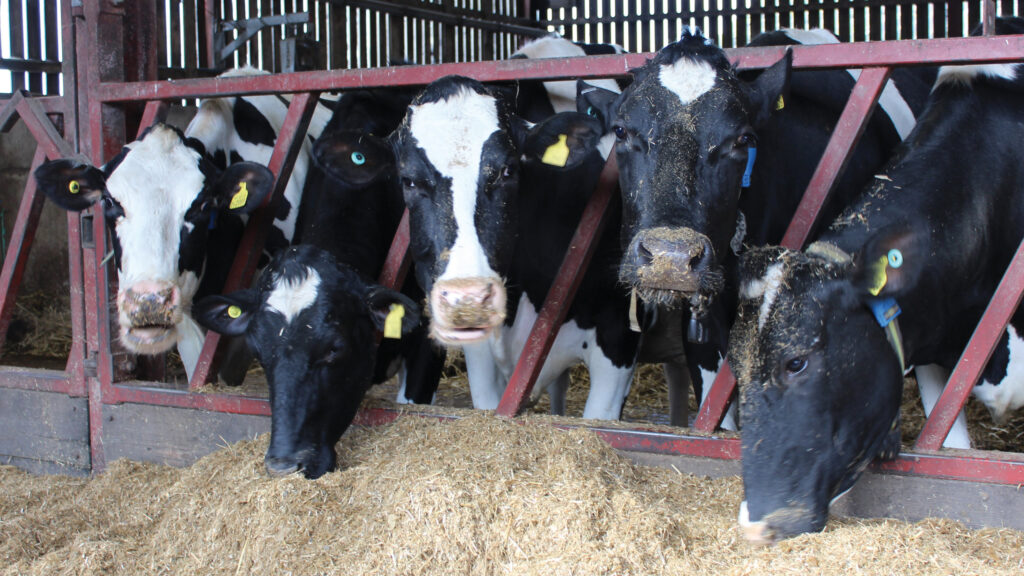 © Aly Balsom
© Aly Balsom Selective breeding, addressing mineral status and transition management are just some of the ways beef and dairy farmers can minimise costly stillbirths.
Perinatal mortality (stillbirth) is defined as the death of the calf prior to, during, or within 48 hours of calving, following a gestation period of at least 260 days.
According to a Teagasc review, about 90% of dairy calves that die in the perinatal period were alive at the start of calving.
See also: What is pelvic scoring and how valuable is it for calving?
On beef units, stillbirths are usually linked to calving problems associated with the size of the calf, which in turn is influenced by dry cow nutrition, bull selection and dam condition.
Minimising losses makes sense considering the welfare implications of losing a calf, together with reduced income and the potential loss of a replacement breeding animal.
Here, a dairy and a beef farmer explain how they have achieved this in their herds.
Dairy case study
Farm Facts: Causeway Farm, Shaftesbury, Dorset
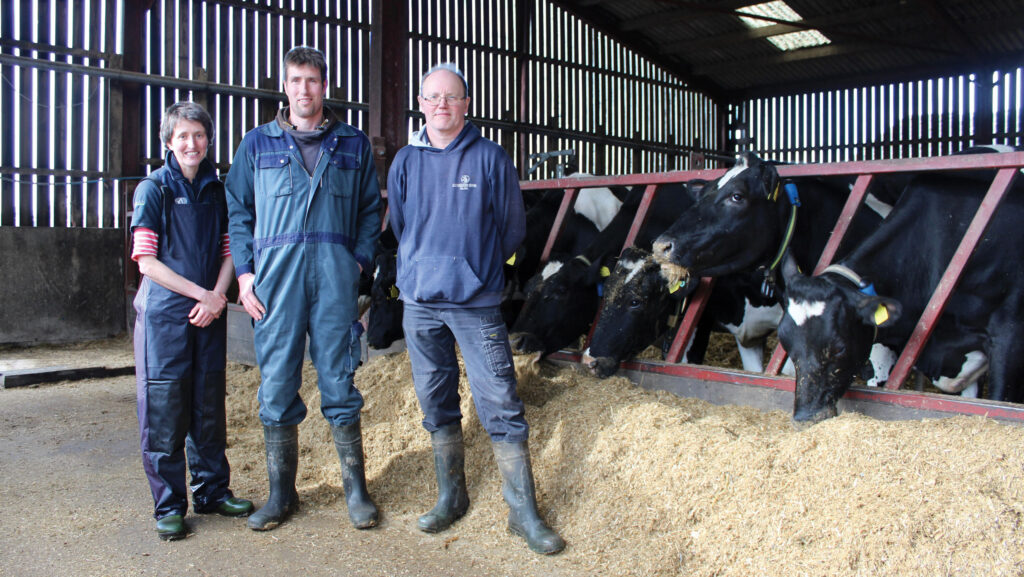
Lucy Hepworth with dairy farmer Sam China and herdsman Keith Towers © Aly Balsom
- 200 Holstein Friesians, calving year round
- 9,100 litres a cow a year at 4.63% fat and 3.22% protein
- Supplies Arla on an Arla Care contract
- 162ha farmed, including grass, maize, barley and forage rape
- Rears own replacements
- Aberdeen Angus and British Blue bulls (artificial insemination) used with an Aberdeen Angus sweeper bull. Beef calves go to Buitelaar or Meadow Quality at four-to-five weeks old
Stillbirth rates have fallen from 7-8% to 1.4% across Sam Chinn’s 200-cow herd in the past decade.
Such a drop is beneficial from cost and animal welfare perspectives, and also fits with a more recent change to an Arla Care (co-operative, animal welfare, renewable energy, ecosystem) milk contract.
This rewards meeting specific animal welfare standards, including achieving a stillbirth rate of less than 5%, says Sam.
In 2014, vet Lucy Hepworth of Friars Moor Livestock Health found the stillbirth rate in the herd’s heifers was two to three times higher than that of the cows, at 14-15%.
This led to investigative work, and highlighted the importance of monitoring and splitting stillbirth rates between heifers and cows.
As an iodine deficiency can affect stillbirth rate, Lucy blood-tested five or six heifers and discovered they were deficient.
They were given a multivitamin bolus that included iodine, prior to outwintering on turnips.
This helped to reduce stillbirth rates, together with a combination of other factors that have subsequently come into play:
1. Reduced age at first calving
Pre-weaning calf growth rates have increased to an average 900g/day. This has been achieved by increasing the quantity (and quality) of calf milk replacer, from 780g a calf a day to 1,050g.
Age at first calving (AFC) has gone from 30 months to 25.3 months as a result. Calves have also moved into a new purpose-built calf facility and are vaccinated for pneumonia.
Lucy says reducing AFC lowers the risk of stillbirths: “Older heifers will have a lot more fat, reducing the size of the birth canal and increasing the chance of dystocia [abnormal or difficult calving] in the calf,” she explains.
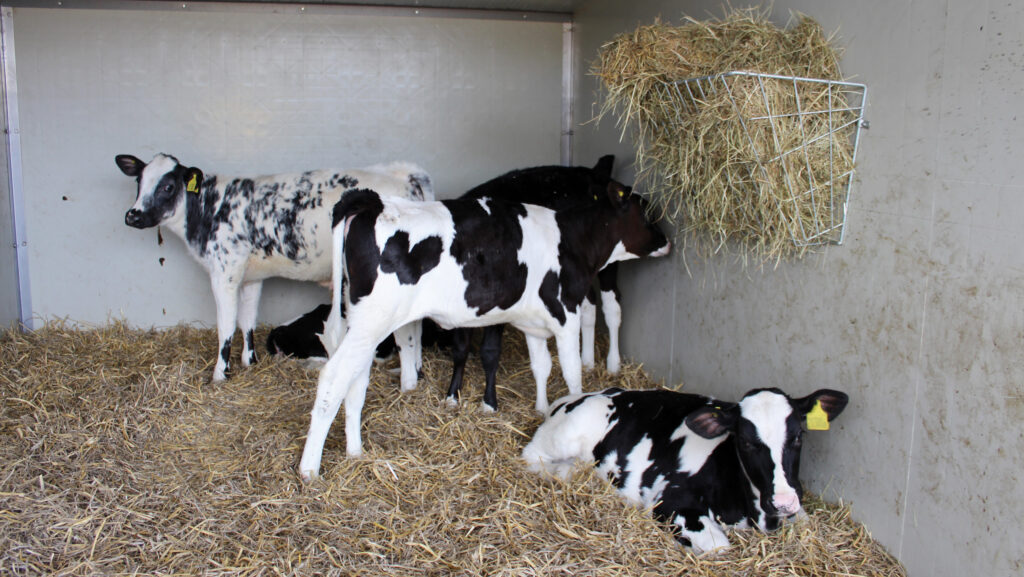
© Aly Balsom
2. Selective breeding
Using estimated breeding values (EBVs), bulls are selected for calving ease direct (measure of how easily a bull’s calves will be born), and calving ease maternal/daughters (how easily a bull’s daughters will calve).
Using sexed semen also helps, as heifers are giving birth to heifers, which tend to be smaller. Heifer stillbirth rate now sits at 3.9%.
3. Control of milk fever
Reducing stress around calving to limit drops in dry matter (DM) intake has partly been responsible for a reduction in milk fever, from 8% five years ago to 1.5%.
Lucy says this has a significant effect on stillbirth: “Calcium is required for smooth muscle contraction, so a uterus in a cow that has subclinical or clinical milk fever will not be able to contract as effectively, so calving is longer.”
Steps taken include limiting movements into the transition group to once a week to avoid disruption and resulting depressions in intake, and introducing a partial dietary cation anion balance diet.
Third-lactation cows onwards receive a calcium bolus.
Beef case study
Farm Facts: Benjafields Farm, Gillingham, Dorset
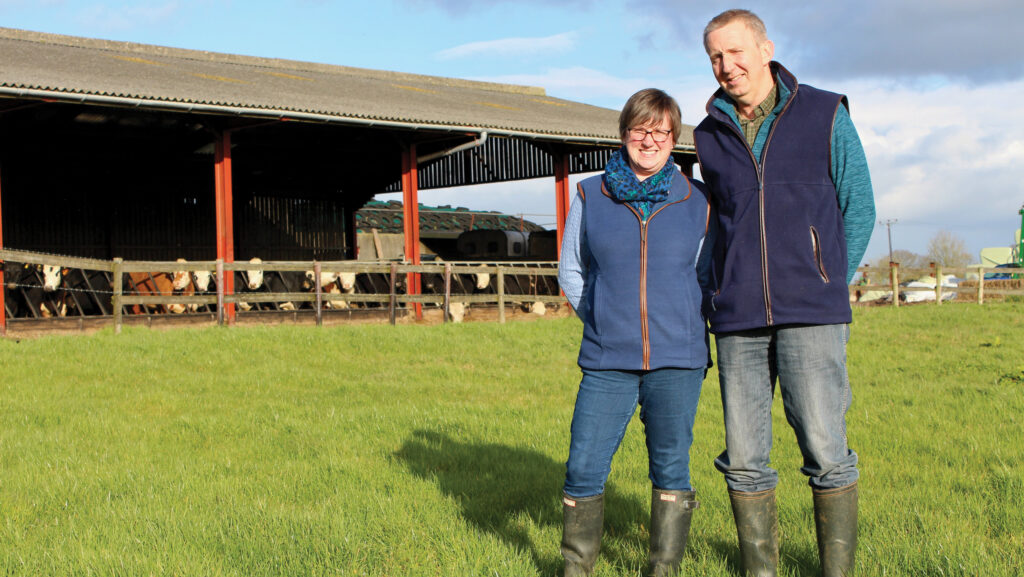
Karen and Andy Doggrell © Aly Balsom
- Farm 190ha, predominately grass with 6ha wholecrop wheat
- 150 Hereford-cross and Aberdeen Angus-cross suckler cows
- 12-week spring calving block
- Sell up to 60 as weaned calves, then select replacements and finish the rest
- Finish at 24 months, averaging 285-370kg deadweight, grading mostly R and O+ and 3 to 4H
- Supplies Meadow Quality and produces beef boxes under the Benjafield Beef brand
Use of EBVs and pelvic scoring of heifers have helped Andy and Karen Doggrell achieve a stillbirth rate of zero in heifers and 1% in cows.
A meeting with their beef suckler discussion group five years ago highlighted how low their stillbirth rate was, but it also flagged that assisted calvings could be reduced.
This, in turn, would benefit stillbirths, as intervention increases the risk of a calf dying, according to vet Helen Rogers of Friars Moor Livestock Health.
The Doggrells have focused on:
1. Selecting easy-calving bulls
Andy now bases bull selection on EBVs, rather than just by eye. Bulls must be above average for calving ease direct and calving ease maternal/daughters.
Eight heifers needed assistance at calving in 2022, compared with 24 in 2019, reflecting the change in breeding policy.
2. Pelvic scoring of heifers
Heifers with small pelvises are more likely to require assistance at calving, which can negatively impact on stillbirth rate.
All heifers are now pelvic-scored by Helen at 13 months old, prior to service.
She measures the cross-sectional area of the pelvis, then uses a conversion factor to work out the maximum weight of calf that could be delivered through that pelvis.
Any heifer calculated to deliver a calf weighing less than 28kg is not selected.
3. Iodine bolus
Six cows are blood-tested annually for trace element deficiencies. Stock will be given a twice-yearly bolus containing iodine, selenium, copper and cobalt, if required. This helps calf development and strength.
4. Efficient handling facilities
Cows are checked roughly every two hours from 6pm until 5am during the calving period.
A calving gate with locking yoke has also been installed. This makes intervention easier and safer.
“Before, because of the stress and danger of the old way of doing it, you’d leave it longer hoping you wouldn’t have to go that far,” reflects Andy, adding that some calves may have died because intervention was delayed.
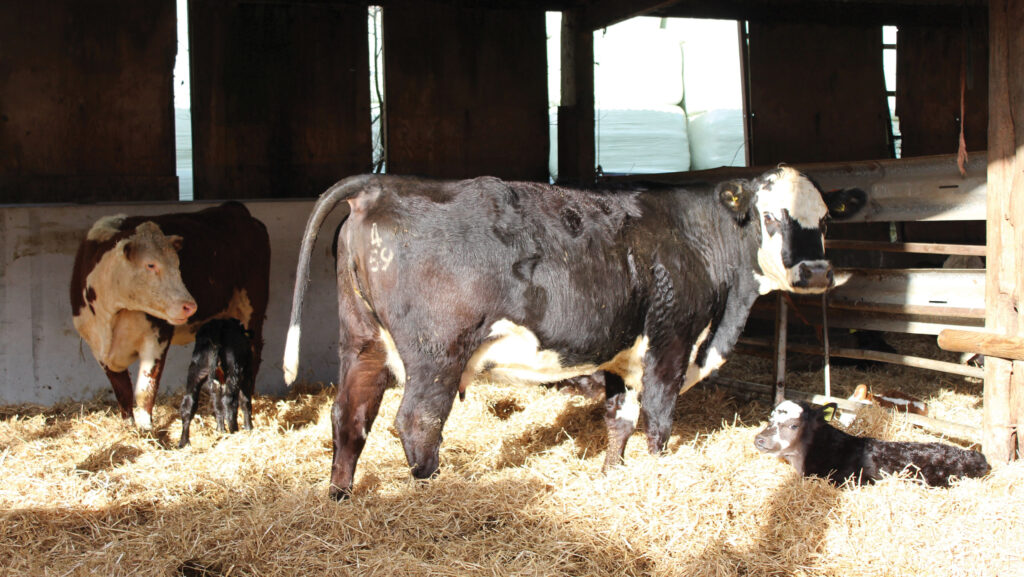
© Aly Balson
Stillbirth stats and targets
- 75% of perinatal mortality on dairy farms occurs within an hour of calving, 10% occurs pre-partum and 15% post-partum (1-48 hours after birth)
- 7.9% – incidence of perinatal calf mortality in the UK in cows and heifers (Holstein Friesians dams, 2000-2011, J Mee, 2013)
- Target a stillbirth rate of less than 5% in dairy herds (although less than 3% is achievable)
- Target a stillbirth rate of less than 2% in beef herds (lower in beef than dairy because the calf is the only source of income (Norquay et al 2020)
For more on beef husbandry, go to fwi.co.uk/know-how/beef-husbandry
